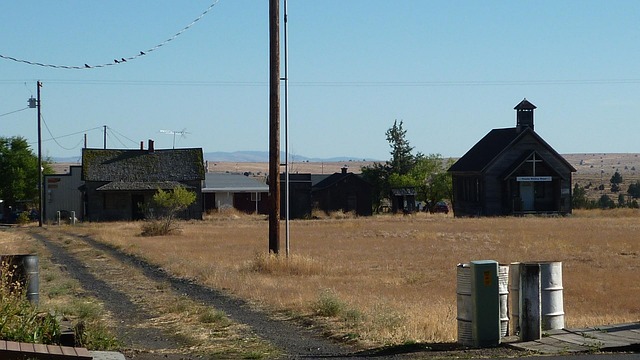In the mid-19th century, the Oregon Gold Rush transformed Lane County into a bustling center of gold mining activities. Thousands of prospectors flocked to the region, drawn by rich mineral deposits, establishing boomtowns and mining camps. The gold rush economics fueled population growth and significantly impacted the local economy, leaving an indelible mark on Lane County's landscape and history. Efficient transport infrastructure, including riverboats, railroads, and roadways, played a crucial role in facilitating the movement of people, supplies, and minerals, shaping the unique history and tapestry of mining towns in the county.
“Uncover the fascinating history of the Lane County, Oregon gold rush and its transportation routes in this comprehensive guide. Delve into the era when prospectors flocked to the region, driven by the allure of golden riches. Explore how these intrepid individuals navigated their way to the thriving mines via river, rail, and roadway networks.
Discover the impact of improved transportation on Lane County’s mining economy and learn about the ghost towns and boomtowns that sprang up along the way, leaving an indelible mark on the region’s tapestry.”
- Historical Context: The Oregon Gold Rush and Lane County's Role
- Transportation Routes: How Prospectors Travelled to Lane County Mines
- Key Transport Methods: River, Rail, and Roadways in Lane County
- The Impact of Transportation on Lane County's Mining Economy
- Ghost Towns and Boomtowns: A Look at Oregon Gold Rush Settlements in Lane County
Historical Context: The Oregon Gold Rush and Lane County's Role

During the mid-19th century, the Oregon Gold Rush captivated the Western world, attracting thousands of eager prospectors and dreamers. Lane County, nestled in the heart of Oregon, played a pivotal role in this historical episode, becoming a bustling hub for gold mining activities and transforming its landscape and economy. The county’s rich mineral deposits drew numerous settlers, who established thriving communities and boomtowns in search of fortune.
These early Lane County prospectors ventured into the wilderness, staking their claims along rivers and in rugged mountains, where they believed the precious metal lay hidden. The gold rush economics boomed, fostering the growth of new towns and fueling a surge in population. The once-quiet rural area became a vibrant tapestry of mining camps, general stores, saloons, and homes, all part of a broader network of Oregon gold rush towns that sprang up across the state.
Transportation Routes: How Prospectors Travelled to Lane County Mines

Prospectors flocking to Lane County for its abundant gold deposits faced a formidable challenge: navigating the region’s rugged terrain and limited infrastructure. Transportation routes were critical, with many choosing to travel by river, utilizing the Willamette River as a primary thoroughfare. Steamships plied the waters, providing a faster means of reaching interior mining claims located further upstream. For those without access to water transport, horse-drawn carriages and wagons remained essential for traversing the dusty roads that connected Oregon gold rush towns like Eugene and Corvallis to the remote mines.
The economic boom spurred by the gold rush led to the rapid development of these transportation routes. New bridges were constructed across rivers, toll roads sprang up, and existing trails were improved. This infrastructure evolution facilitated the influx of prospectors, equipment, and supplies, fueling the intense mining activity that defined Lane County’s history during this period.
Key Transport Methods: River, Rail, and Roadways in Lane County

In the heart of Oregon’s wild and scenic landscape, Lane County played a pivotal role during the state’s gold rush era. Prospectors flocked to this region, drawn by promises of riches buried beneath its fertile soil and towering peaks. To navigate the rugged terrain and connect the isolated mining camps with burgeoning Oregon gold rush towns, several key transport methods emerged.
River transportation was instrumental, with the Willamette River serving as a vital artery for moving goods and people. Steamboats plied the waters, ferrying miners and their equipment from bustling boomtowns to remote mines. Railroads, another significant mode of transport, crisscrossed the county, facilitating the swift movement of precious metals extracted from Lane County mining claims. These rails not only connected major gold rush towns but also enabled the economic prosperity that fueled the region’s growth during this period. Roadways, though less efficient than rivers or rails, were crucial for linking smaller communities and providing access to the most distant prospecting sites. Together, these transport methods underpinned the gold rush economics of Lane County, shaping its history and leaving an indelible mark on its tapestry of mining towns and stories.
The Impact of Transportation on Lane County's Mining Economy

The development of efficient transportation routes played a pivotal role in shaping Lane County’s mining economy during the Oregon Gold Rush. With the discovery of lucrative gold deposits, hundreds of prospectors flocked to the region, igniting a boomtown atmosphere. Access to reliable transportation became essential for moving people, supplies, and extracted minerals. The county’s network of rivers, trails, and later, roads, facilitated the swift movement of goods, enabling miners to access remote areas and increasing the overall productivity of gold mining operations.
These transportation routes not only connected mining sites to bustling Oregon gold rush towns but also fostered a thriving trade economy. The ability to transport minerals efficiently sparked a surge in entrepreneurial ventures, leading to the establishment of stores, saloons, and services catering to the needs of prospectors and miners. The economic ripple effect was significant, with booming businesses supporting a diverse range of professionals, from merchants to blacksmiths, contributing to the overall growth and vibrancy of Lane County’s mining communities.
Ghost Towns and Boomtowns: A Look at Oregon Gold Rush Settlements in Lane County

During the Oregon Gold Rush in the mid-19th century, Lane County saw a surge in temporary settlements known as ghost towns and boomtowns. These communities sprang up along transportation routes like the Willamette River and various trails, fueled by the influx of prospectors seeking their fortunes. Many settled in areas with promising gold deposits, leading to the rapid growth of towns like Independence and Springfield.
The economic landscape of Lane County was transformed by this gold rush, attracting a diverse mix of miners, merchants, and entrepreneurs. Boomtowns became hubs of activity, offering services and supplies to prospectors while also experiencing a vibrant, though often short-lived, cultural scene. The success of these early settlements laid the foundation for what would become a thriving agricultural and timber economy in the region.
